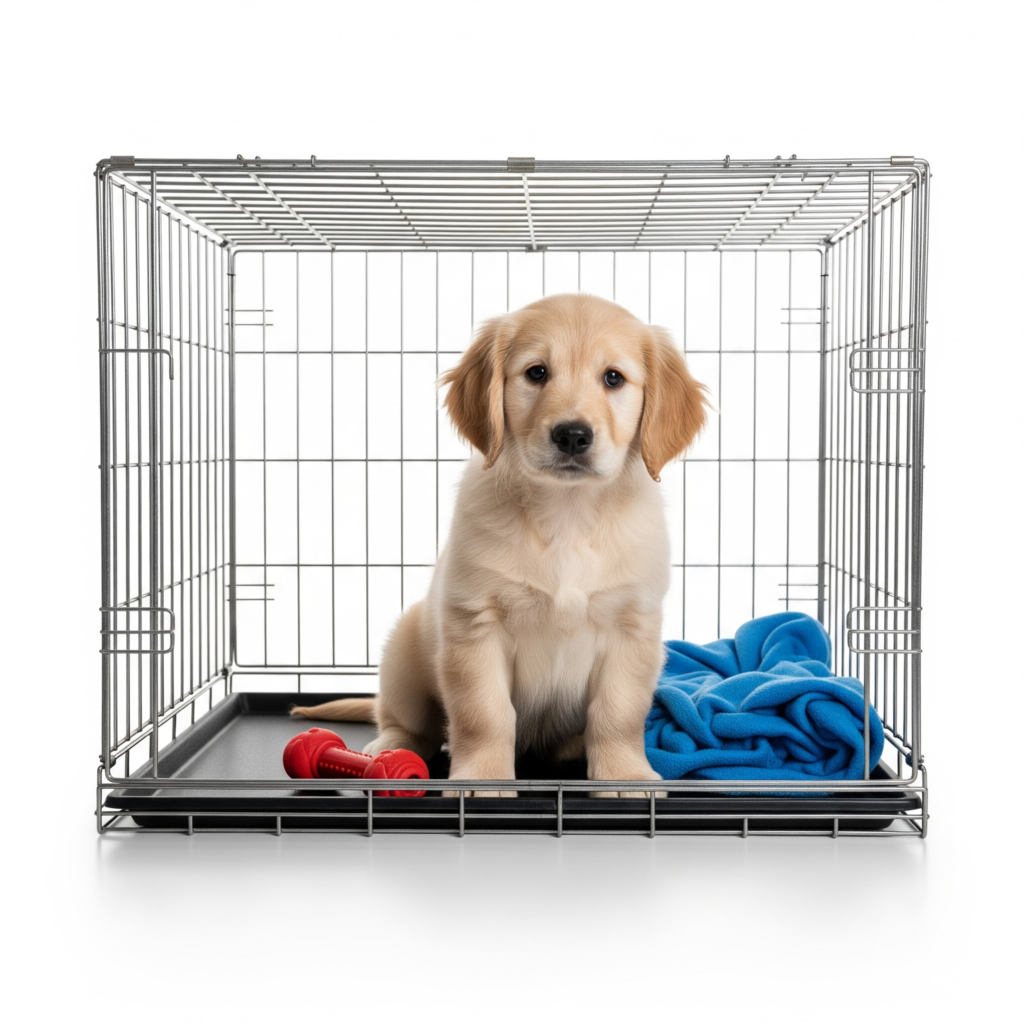
Crate training can be a game-changer for new puppy owners—helping with potty training, creating a safe sleep space, and even reducing anxiety. But one question confuses many pet parents: What crate size is right for my puppy?
Choosing the perfect crate size is more than just grabbing something “small” off the shelf. If it’s too big, your puppy might use one end as a bathroom. Too small, and it becomes uncomfortable and stressful. Here’s how to get it just right!
Why Crate Size Really Matters
Your puppy’s crate should feel like a cozy den—not a jail cell or an echoing room. The right crate size will:
- Provide a safe, snug space that feels secure
- Encourage your puppy not to potty inside it
- Allow enough room to stand, turn, and lie down
- Support healthy development and better sleep
Too much space can actually cause anxiety or invite messes. On the flip side, a tight crate can lead to discomfort and even physical harm.
How to Measure Your Puppy for a Crate
To choose the correct crate size, grab a measuring tape and follow these steps:
- Measure Length
From the tip of the nose to the base of the tail (not the full tail).
👉 Add 2 to 4 inches to that number for growing room. - Measure Height
From the ground to the top of the head or ears—whichever is taller when your puppy is standing.
👉 Add 2 inches for comfort.
Use these numbers to pick a crate that gives your puppy enough space without going overboard.
A Quick Size Guide (Based on Breed)
Here’s a rough idea of crate sizes depending on your puppy’s breed or expected adult weight:
- Extra Small (18–22″) – For toy breeds like Chihuahuas or Yorkies
- Small (24″) – For Shih Tzus, Dachshunds, Pomeranians
- Medium (30″) – For Cocker Spaniels, French Bulldogs
- Large (36″) – For Border Collies, Bulldogs
- Extra Large (42–48″) – For Golden Retrievers, Labs, German Shepherds
Note: If you’re getting a large-breed puppy, consider using a larger crate with a divider panel so you can adjust the space as your puppy grows.
Crate Types to Consider
Choosing the right type of crate is also important:
- Wire Crates: Great ventilation, adjustable size (with divider), collapsible for travel
- Plastic Crates: Cozy and enclosed, ideal for travel and nervous puppies
- Soft-Sided Crates: Lightweight and portable, best for calm puppies
- Furniture-Style Crates: Blends with your home decor, best for older or crate-trained dogs
Each crate type has pros and cons, but wire crates are often the best starting point for new puppy owners.
Common Crate Mistakes to Avoid
- Choosing one “to grow into” without a divider
Too much space early on invites accidents. - Leaving your puppy in the crate too long
Crates are tools—not babysitters. - Skipping crate training
Simply buying a crate won’t teach your puppy how to love it. Introduce it gradually, with treats and praise.
Helpful Accessories to Add
- Crate pad or blanket for comfort
- Chew-safe toy to keep your puppy busy
- Water bowl attachment for longer periods
- Crate cover to help create a dark, den-like feel (optional)
Final Thoughts
Picking the perfect crate size for your new puppy sets the stage for successful training, better sleep, and a calm home environment. Remember, it should be just big enough for comfort—not so big it feels like a playpen.
If you’re ever in doubt, go slightly smaller with a divider and adjust as your puppy grows. The right crate today means fewer messes and more peaceful nights for both of you! 🐾💤 PetsDogPuppy
